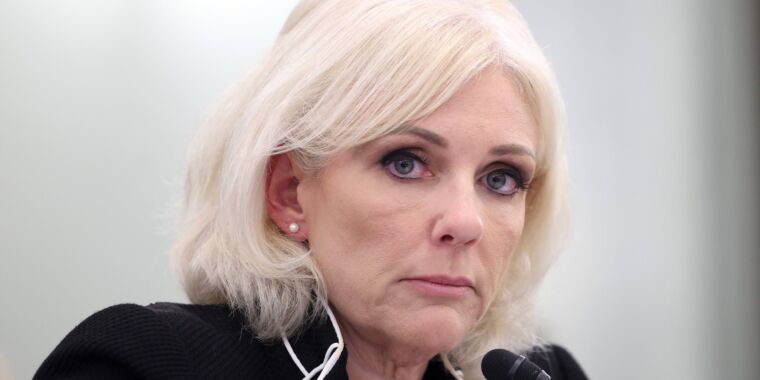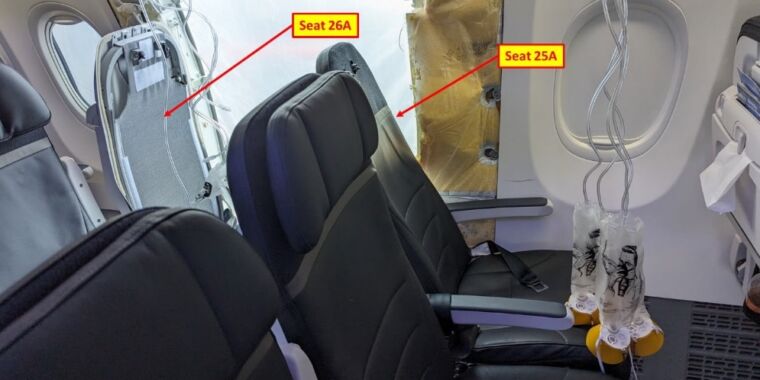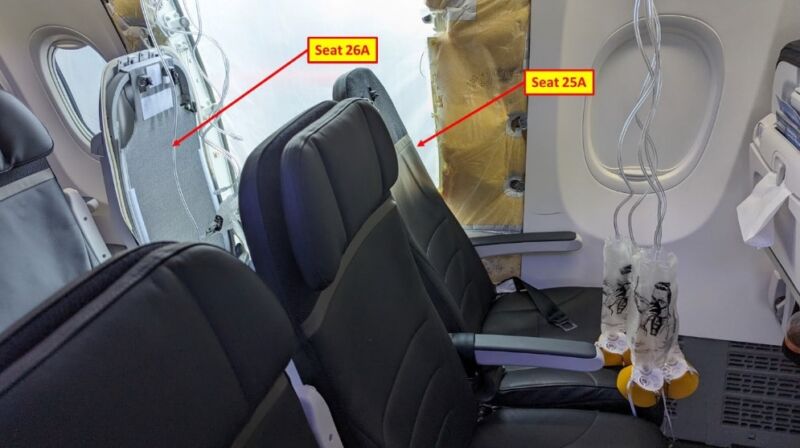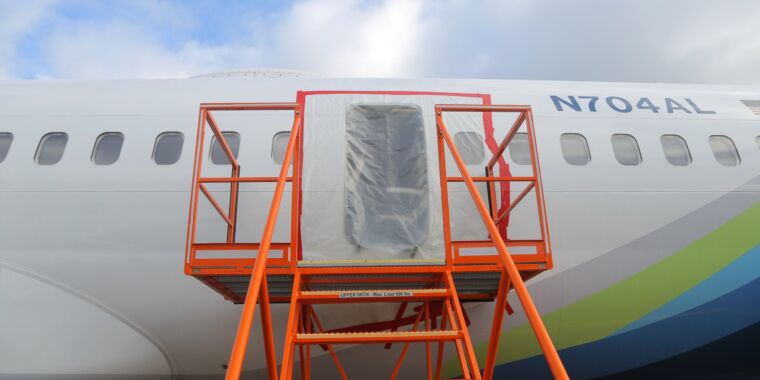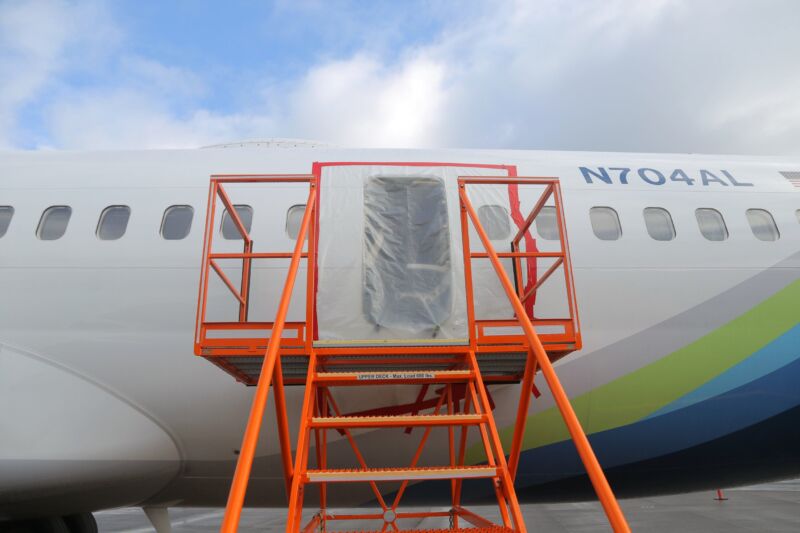Security footage of Boeing repair before door-plug blowout was overwritten
737 Max door-plug blowout —
NTSB: Boeing “unable to find the records documenting” repair work on 737 Max 9.
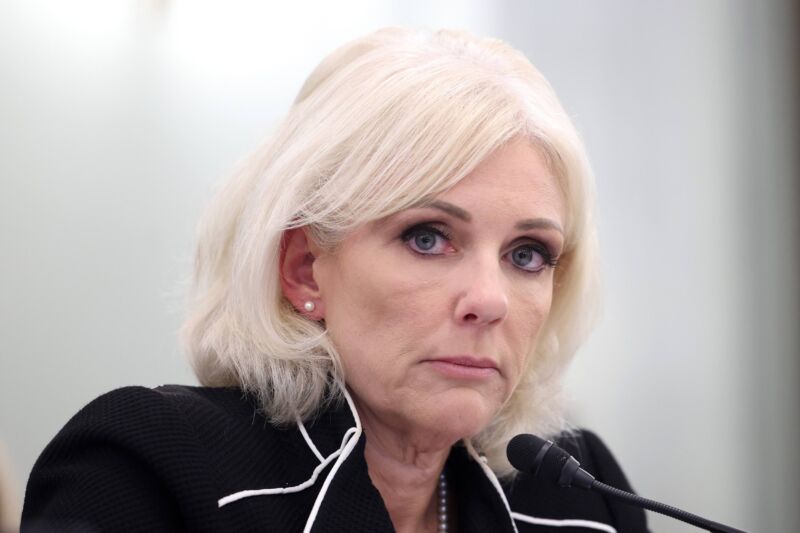
Enlarge / National Transportation Safety Board Chair Jennifer Homendy testifies about the Boeing door-plug investigation before the Senate Commerce, Science, and Transportation Committee on March 6, 2024, in Washington, DC.
Getty Images | Kevin Dietsch
A government investigation into a Boeing 737 Max 9 plane’s door-plug blowout has been hampered by a lack of repair records and security camera footage, the National Transportation Safety Board’s chair told US senators. Boeing was “unable to find the records” and told the NTSB that the security camera footage was overwritten.
“To date, we still do not know who performed the work to open, reinstall, and close the door plug on the accident aircraft,” NTSB Chair Jennifer Homendy wrote Wednesday in a letter to leaders of the Senate Commerce, Science, and Transportation Committee. “Boeing has informed us that they are unable to find the records documenting this work. A verbal request was made by our investigators for security camera footage to help obtain this information; however, they were informed the footage was overwritten. The absence of those records will complicate the NTSB’s investigation moving forward.”
A Boeing spokesperson told Ars today that under the company’s standard practice, “video recordings are maintained on a rolling 30-day basis” before being overwritten. The NTSB’s preliminary report on the investigation said the airplane was delivered to Alaska Airlines on October 31, 2023, after a repair in a Boeing factory. On January 5, the plane was forced to return to Portland International Airport in Oregon when a passenger door plug blew off the aircraft during flight.
The NTSB’s preliminary report found that four bolts were missing from the door plug, which can be used instead of an emergency exit door. There was “no evidence” that the door plug “was opened after leaving Boeing’s facility,” indicating that the bolts were not re-installed at the factory. The plane was serviced at Boeing’s Renton, Washington, facility to replace five damaged rivets in a job that required opening the door plug.
“We will continue supporting this investigation in the transparent and proactive fashion we have supported all regulatory inquiries into this accident,” Boeing said in a statement provided to Ars. “We have worked hard to honor the rules about the release of investigative information in an environment of intense interest from our employees, customers, and other stakeholders, and we will continue our efforts to do so.”
Chair called Boeing CEO to seek employee names
Homendy’s letter to Senate Commerce Committee Chair Maria Cantwell (D-Wash.) and Ranking Member Ted Cruz (R-Texas) responded to questions raised at a committee hearing last week. The questions were related to “whether Boeing has provided documentation on the work to open, reinstall, and close the door plug,” and the identities of door crew employees, the letter noted.
“NTSB investigators first requested documents that would have contained this information from Boeing on January 9, 2024,” the letter said. “Shortly thereafter, we identified the door crew manager and were advised that he was out on medical leave. We requested status updates on February 15, 2024, and February 22, 2024, after which we were advised by his attorney that he would not be able to provide a statement or interview to NTSB due to medical issues.”
Boeing provided the names of some people who were familiar with the door-plug work, but the NTSB said it wanted a more exhaustive list to prepare for investigative interviews. On March 2, NTSB investigators asked Boeing for the names of all employees who reported to the door crew manager at the time of the repair in September 2023. Boeing provided the list but “did not identify which personnel conducted the door plug work,” the letter said.
“After NTSB received this list, I called Boeing Chief Executive Officer David Calhoun and asked for the names of the people who performed the work,” Homendy wrote. “He stated he was unable to provide that information and maintained that Boeing has no records of the work being performed.”
NTSB seeks info on Boeing quality-assurance and safety
Homendy told senators that the agency is not seeking the names for punitive purposes. “We want to speak with them to learn about Boeing’s quality-assurance processes and safety culture. Our only intent is to identify deficiencies and recommend safety improvements so accidents like this never happen again,” she wrote.
Homendy wrote that she is “increasingly concerned that the focus on the names of individual front-line workers will negatively impact our investigation and discourage such Boeing employees from providing NTSB with information relevant to this investigation.” To counter those fears, Homendy “instructed NTSB to utilize our authority to protect the identities of the door crew and other front-line employees who come forward with information relevant to the investigation.”
Homendy also sent a letter to Boeing on Wednesday reminding the company that until the investigation concludes, “only appropriate NTSB personnel are authorized to publicly disclose investigative information and, even then, the disclosure is limited to factual information verified during the course of the investigation.”
“For the public to perceive the investigation as credible, the investigation should speak with one voice—that being the voice of the independent agency conducting it,” Homendy told Boeing in the letter.
Security footage of Boeing repair before door-plug blowout was overwritten Read More »
